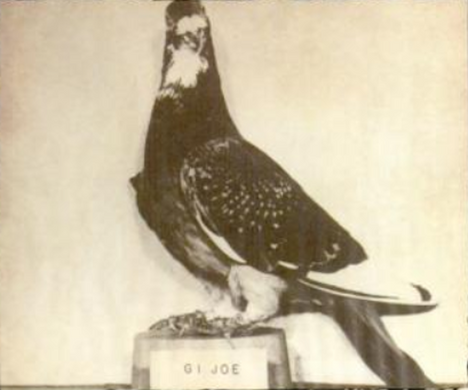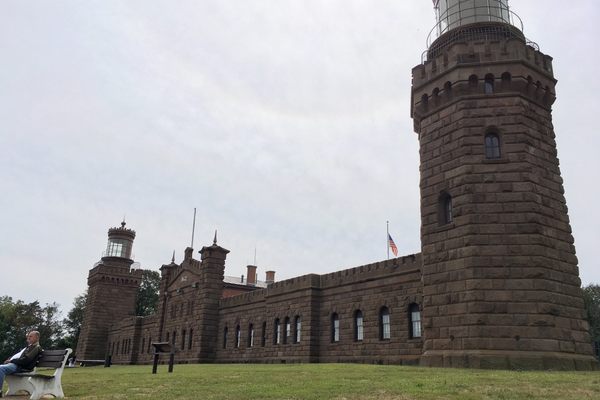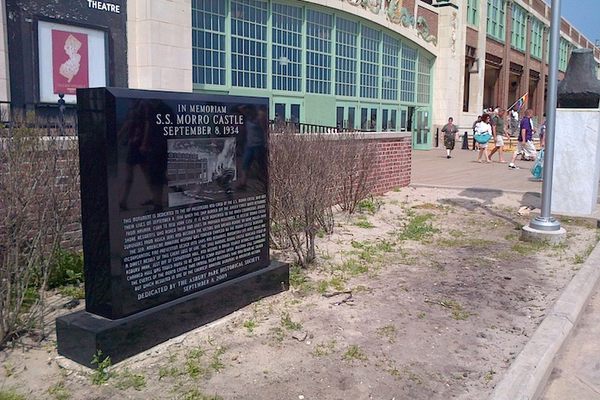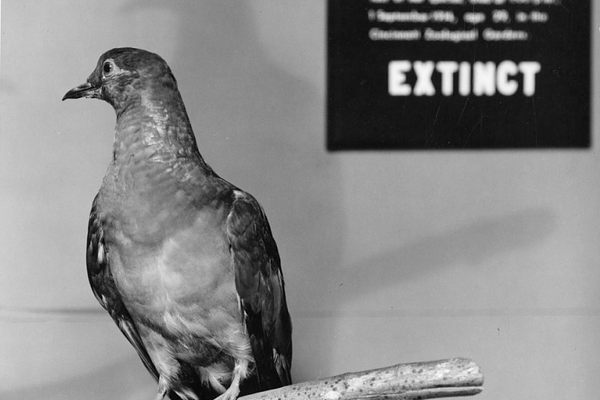G.I. Joe
A decorated war pigeon stands guard in eternal taxidermied rest at his alma mater.
In the U.S. Army Communications Electronics Museum at Fort Monmouth, a hero is honored in all of his feathery glory after saving an entire village and 1,000 troops.
A homing pigeon that served in the United States Army Pigeon Service, G.I. Joe was an exemplary soldier. Part of a unit called the Signal Pigeon Corps, Joe was a communication and reconnaissance pigeon, one of 54,000 war pigeons used in WWII. In a war rife with espionage and swiftly evolving technology and detection methods, the birds were considered undetectable and extremely effective—90% of the messages they delivered were received.
G.I Joe was the key player in dodging what could have been a devastating bombing aimed at the village of Calvi Vecchia, Italy. British troops were struggling to gain ground in the village, and called in an air strike to weaken the German position. By the time the strike was scheduled, the troops had managed to occupy the town, placing themselves directly in the line of fire.
A frantic message went out on the leg of G.I. Joe, who arrived at headquarters just as the bombers were beginning to taxi the runways for takeoff. Joe’s arrival was spot on. He had flown 20 miles in 20 minutes, only five minutes before the planes were to take off.
In November of 1943, G.I. Joe was awarded the Dicken Medal for gallantry at the Tower of London, and was honored as the soldier who performed “the most outstanding flight made by a United States Army homing pigeon in World War II.”
Once he was relieved of duty, G.I. Joe and two dozen other pigeons retired to the U.S. Army’s Churchill Loft at Fort Monmouth, where the war pigeon training center was located. Once the pigeon service came to an end in 1957, Joe and his 24 veteran companions were sent to zoos or sold to the public. Joe lived out his remaining days at the Detroit Zoological Gardens until the ripe old pigeon age of 18. His remains were preserved through taxidermy, and he was returned to Fort Monmouth, where he stands at attention in the U.S. Army Communications Electronics Museum.
Noted as one of the most famous pigeons in the world, this title is only rivaled by another well decorated military pigeon, Cher Ami, whose remains are on display in the Smithsonian National Museum of American History.
Update November, 2016: Fort Monmouth is now closed and is currently being sold off for redevelopment. Where Joe resides now is unknown.
















Follow us on Twitter to get the latest on the world's hidden wonders.
Like us on Facebook to get the latest on the world's hidden wonders.
Follow us on Twitter Like us on Facebook